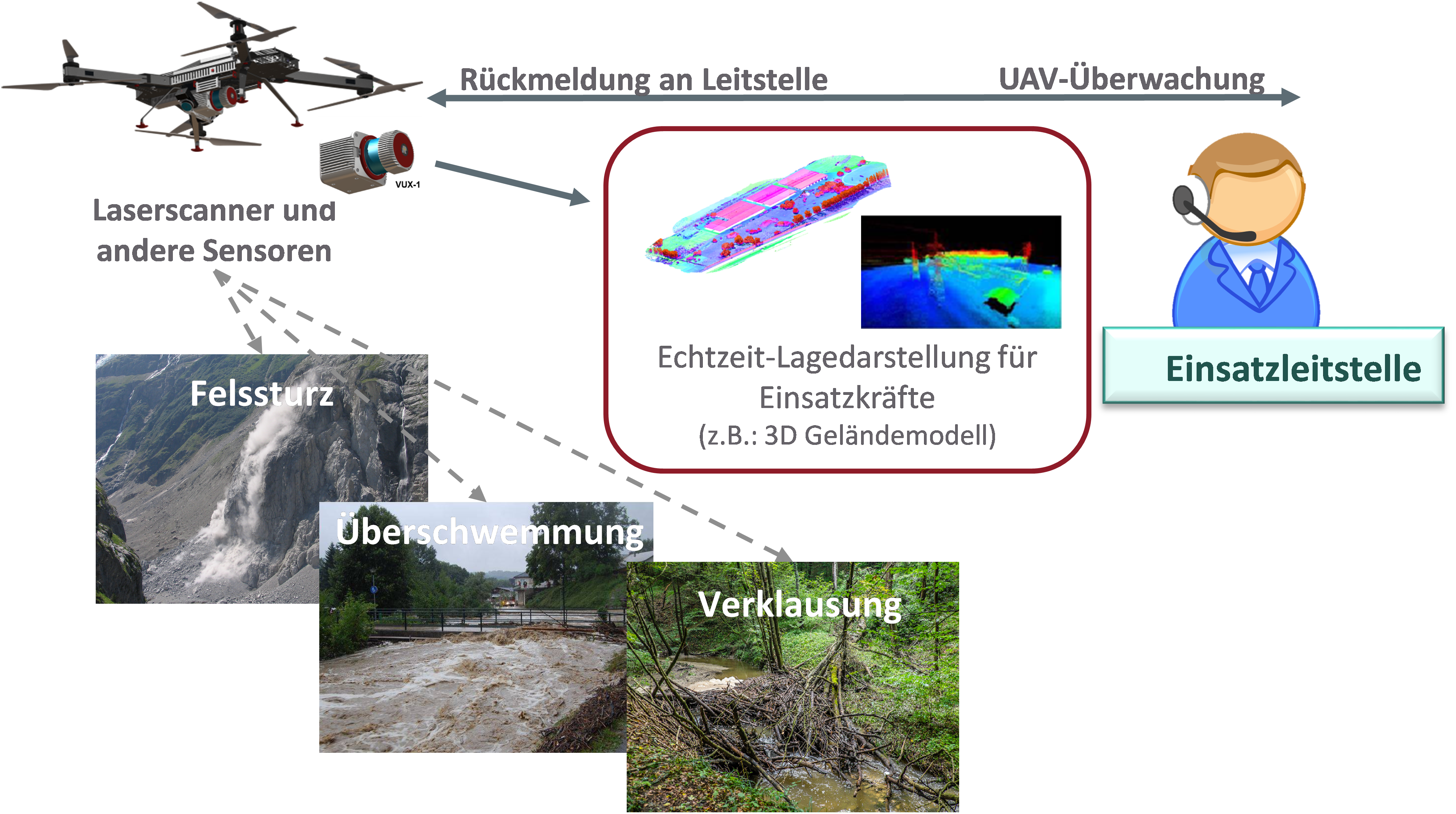Aerial search & Rescue support and supErvision of inAccessible terrainS
THE CHALLENGE
Austria is characterised by mid- and high mountains, where only around 39% the land area is permanent located. High tides, mud flows, landslides, rockslides, and avalanches are natural phenomena, which present high safety risks for the residential area. Overall, there are around 12.000 of torrent drainage areas and 860 areas of risk (rockslides, rockslides) identified, in which 20% of the whole hosing stocks und 1.500 kilometres of traffic route is threatened from the nature forces of alpines. This threat from natural hazards results in a high number of operations where emergency responders are exposed to increased risk. The damage area and the extended damage are most of the times unknown and must be explored. This can be difficult and tedious, as some areas are problematic to pass, for example due to fallen trees and rockfalls. In these cases, support from the air by means of unmanned aerial vehicles (UAVs) in combination with the latest sensor technology can serve to obtain information more quickly and generate precise situational images.
THE PROJECT
AREAS aims to minimize the risk of emergency forces in crises and disasters as well as in damage situations and to reduce economic damage. The combined use of Unmanned Aerial Vehicles (UAVs) and state-of-the-art sensors in the visible, infrared and multispectral range, as well as laser scanners, enables effective and efficient extraction of data and information in impassable terrain in real time. Aerial information support offers significant advantages in both prevention and preparedness and in incident management. The technology makes it possible to quickly and efficiently survey the situation and evaluate it in detail at locations of particular interest using semi-autonomous flight and sensor data fusion algorithms, and display it in a 3D situation image.
The annual torrent inspections to be carried out by the municipalities offer great potential for the use of AREAS, whereby potential damage to important infrastructure such as bridges, traffic routes or settlement areas can be detected at an early stage. Use cases in the coping phase are the differential calculation of material after landslides or the search for missing persons in the mountains, which involve a considerable input of limited available personnel and very expensive resources (typically helicopters). Therefore, it is obvious to perform such tasks by means of a small-scale deployment of UAVs equipped with appropriate sensors in order to significantly reduce the effort for the emergency services.
In addition to theoretical analyses and a proof of concept, AREAS will also take an interdisciplinary approach to legal issues (data protection and aviation) that arise in connection with the use of UAVs. A sociological acceptance survey will investigate the attitudes, hopes and fears of the Austrian population towards an official use of UAVs. For this purpose, more than 1,200 people throughout Austria will be interviewed, discussions will be held and, finally, acceptance-promoting recommendations will be developed. These studies serve as a starting point for a sustainable implementation and operationalization of AREAS in the Austrian context. This will ensure that AREAS can serve to substantially improve the security situation of the Austrian population in the years to come.
Projektleitung
AIT – Austrian Institute of Technology GmbH
Projektpartner
Office of the Provincial Government of Styria- Department of Civil Protection and National Defence
Office of the Vorarlberg Provincial Government, Department Division Provincial Warning Center
Austro Control, Austrian Society for Civil Aviation GmbH
Ministry of Interior Austria
Ministry of National Defence Austria
Federal Ministry of Agriculture, Regions and Tourism
Institute for Empirical Social Research GmbH such as IFES Feld GmbH
RIEGL Research Research Society mbH
University of Vienna, Legal Informatics Group




